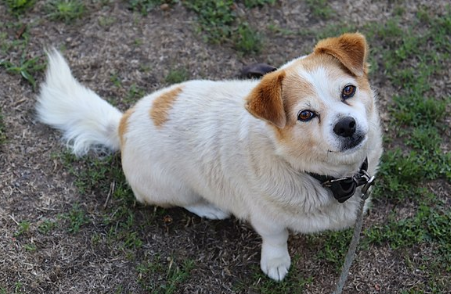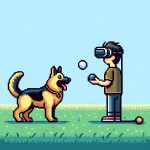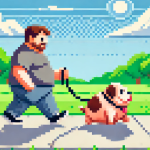
Don’t Shave the Whiskers! Science Just Proved Your Dog’s Face Fur Is Way Smarter Than You Think
Imagine someone blindfolds you, spins you around, and asks you to navigate your living room with just your chin. Sounds impossible, right?
Well, that’s basically what we’re doing to our dogs when we shave off their whiskers.
Yup. That adorable fluff sprouting from your dog’s eyebrows, muzzle, and upper lip? It’s not just extra hair—it’s a secret sensory superpower. And science is finally giving whiskers the credit they deserve.
So… What Exactly Are Vibrissae (a.k.a. Dog Whiskers)?
In human terms? They’re like a built-in GPS, radar system, and safety sensor—rolled into one.
Vibrissae (fancy science name for whiskers) are deeply embedded in your dog’s skin and loaded with nerve endings. They’re surrounded by special blood-filled sinuses and even have their own muscles. In fact, scientists have now confirmed that dogs don’t just have big obvious whiskers—they’ve also got tiny “microvibrissae” near their lips that help them explore and sense objects close up.
Think of them as your dog’s fingertips—only fuzzier.
Why Shaving Whiskers Might Be a Big Mistake
Turns out, dogs actually use their whiskers a lot:
- To Blink in Time – When dogs’ facial whiskers are touched, they reflexively blink—like little windshield wipers for their eyeballs. That’s a protective reflex. No whiskers? No warning.
- To Navigate Like a Boss – Dogs can’t see directly under their snouts (awkward snout + farsighted eyes = blind spot). So they use their whiskers to feel around when sniffing, eating, or exploring.
- To Detect Danger – Running through bushes? Chasing a ball in the dark? Whiskers help dogs sense obstacles before it’s too late.
- To Hunt (or Find That Lost Treat) – Science has actual footage of dogs using their microvibrissae to locate snacks hidden in pebbles. YES, THAT’S A THING.
And yet… many groomers still shave them off—especially for dog shows. (Looking at you, poodles.)
Wait, Are Whiskers That Important?
Short answer: YES.
Researchers in Germany used videos and high-powered microscopes (think CSI: Dog Edition) to study whiskers up close. They found:
- Dense innervation (a.k.a. tons of nerve endings)
- Muscles for voluntary movement (yup, your dog moves those whiskers on purpose)
- Special sensors called Merkel cells that help detect pressure and texture
One dog in the study even used whiskers to find treats on a blanket and pick them up like a pro. Another blinked every time its eyebrow whiskers were touched. That’s not coincidence. That’s bioengineering magic.
3 Things You Can Do to Protect Your Dog’s Whiskers (Starting Today)
🛑 1. Say No to the Whisker Trim
If your groomer insists on shaving whiskers “for aesthetics,” it’s time for a convo. Ask for a whisker-friendly trim—or find a groomer who gets it.
🧠 2. Treat Whiskers Like the Sensory Tools They Are
Your dog isn’t being dramatic when they flinch after you brush their face. Respect the whiskers. Avoid unnecessary tugging or trimming.
🐶 3. Let Their Beard Grow, Especially in Poodles
Curly-haired breeds like poodles often get full-face shaves. But that can impact their ability to explore and even avoid injuries. A well-groomed beard? Now that’s a look.
Whiskers Are Basically Face WiFi. Don’t Cut the Connection.
It’s 2025. We’ve got smart homes, AI, and robot vacuums. Let’s get smart about our dogs’ needs too. Science says their whiskers are way more than face fluff—they’re essential sensory tools that help dogs live, play, and explore safely.
So next time you see your dog’s muzzle twitching, remember: that’s not just cute—it’s clever.
Share Your Pet’s Story!
Has your pup ever used their whiskers in a surprising way? Have you ditched the shave and noticed a difference?
Drop your story in the comments—we’d love to hear it!
And if you learned something new today, share this post with your fellow dog lovers. Because every whisker deserves to wag on.
Want more science-backed pet tips?
Subscribe to This Week in Pet Health—your weekly dose of expert advice, adorable stories, and insights you can actually use. 🐾




